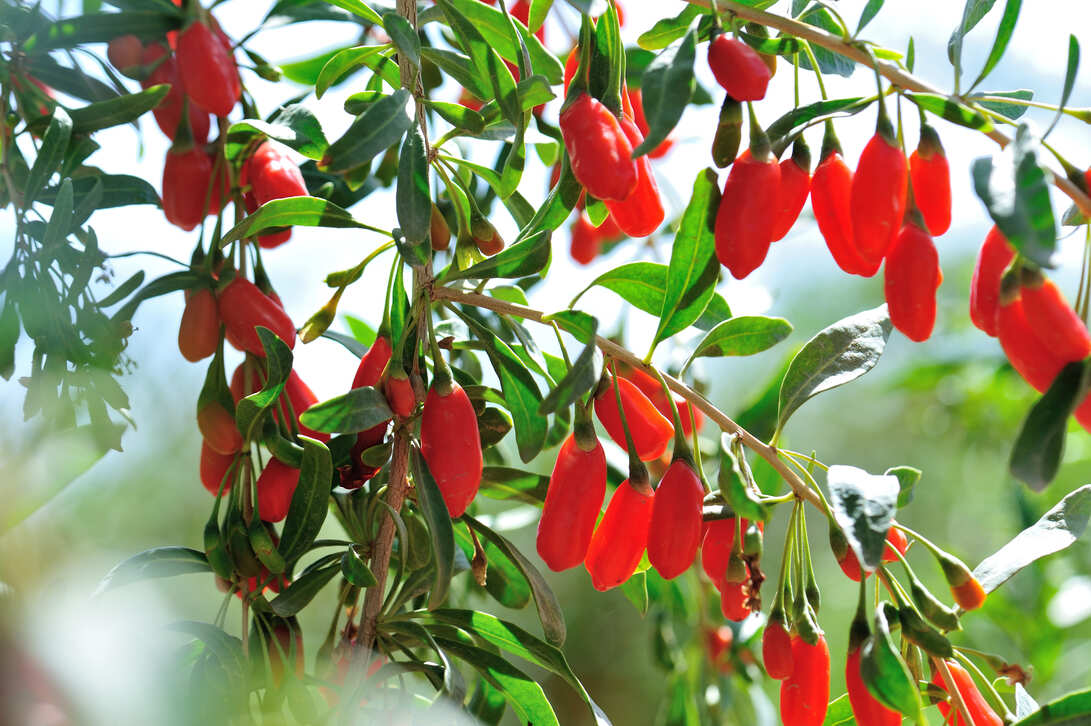Goji berries
This hardy, deciduous shrub has increased in popularity in recent years. It yields a plentiful supply of nutritious red berries, which can be eaten fresh, cooked or dried.

Quick facts
Botanical name Lycium barbarum
Group Deciduous, fruiting shrub
Flowering time Summer
Planting time Late summer to autumn
Height and Spread 3m (10ft) x 4m (13ft) or more
Aspect Full sun
Hardiness Fully hardy
Difficulty Moderate
Cultivation notes
- They tolerate light shade, but should be grown in full sun for best crop
- They are hardy and, once established, will tolerate wind, salt-laden air (such as coastal gardens) and drought
Plant in free-draining soil that has been enriched with well-rotted garden
Container growing
Choose a container with good drainage holes, and use a John Innes No 2 potting compost with added grit or sharp sand. Apply a liquid fertiliser (such as tomato feed) fortnightly during the growing season.
Harvesting
Plants begin to fruit after two-to-three years. Harvest berries from late summer until the first frosts. Only fully ripe fruit are edible. Fruit can turn black when handled so consider harvesting by shaking the berries gently from the plant onto a sheet placed beneath.
Pruning and training
For maximum fruiting, it is best to train plants against a wall or fence, tying the lax stems onto wires. Wear gloves for protection against spines.
Flowers and fruit are formed on the stems that grew in the previous year, so pruning aims to encourage the production of this wood.
- Prune lightly in early spring, removing dead and badly-placed shoots. If necessary, cut overlong stems back to a well-placed branch and remove some of the oldest wood
- Renovate shrubs in early spring, reducing the plant to a low framework of branches or cutting close to the base. This will cause vigorous re-growth, but initially reduces the fruiting
- To restrict growth on plants in containers, cut new growth back by up to half in summer (however, this will reduce the yield)
Propagation
Sow seeds indoors in spring, covering with a very fine layer of compost; germination is best at 18-20°C. Take softwood or semi-ripe cuttings in summer, hardwood cuttings in winter; layer plants in autumn or lift and replant suckers in late winter.
Give seedlings and rooted cuttings protection in their first winter and plant out the following spring.
Cultivar Selection
See also...
Get involved
The Royal Horticultural Society is the UK’s leading gardening charity. We aim to enrich everyone’s life through plants, and make the UK a greener and more beautiful place.